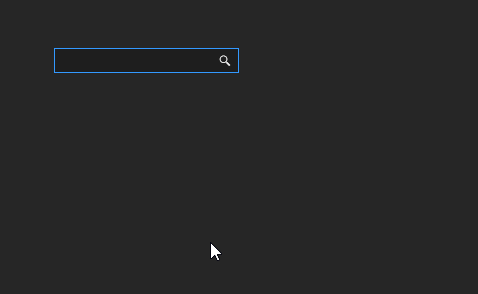-
New Product
Remote-Opening Barrier Valve
-
New Product
ForeSite® Power Regenerative System
-
New Product
Tubular Running Assurance
-
New Product
MARS™
-
New Product
MODUS™
- See all Products
March 26, 2020 /
0 comments / in
Canvas
Product Release
/ by Walter Goodwater
We’re all very happy to have CygNet 9.4 out in the world. The CygNet development and product management team worked hard to ensure this release would provide significant value for our customers. Hopefully you can see the results of that work in the massive 9.4 release notes.
As the lead developer for Canvas, I want to spend some time highlighting some of the many new HMI features in 9.4. This release represents the biggest investment we’ve done in our new HMI since it came out a few years ago. Frankly there are just too many new features to meaningfully cover in a single post, so I am going to break it up and do a series on some of the awesome new things in Canvas.
Today I want to talk about navigation. Navigation is a big theme for Canvas 9.4. As people start building out new systems in Canvas, we wanted to expand options for end users to move around quickly and efficiently.
Navigator & Tabs
Anyone who has used Studio much will probably have built or worked with an HMI design driven by tabs. The tab strip is a classic, time-honored, and useful UI tool for splitting out sections of the interface by context. So even though it is old-school, we didn’t want to abandon it for Canvas, so it was added in 9.4. As an improvement over Studio’s use of the basic Microsoft tab strip, the Canvas control includes a built-in nested view so you can assign screens directly to tabs without any necessary script.
As much as we love the tab-based HMI approach, we wanted also to include new, more modern options. For that, we introduced the Navigator control.

The navigator is a clean, light-weight, and modern approach to building a navigation workflow. You can quickly see how layers and layers of tabs can be modernized with the navigator and its icons and sub-menus. It allows direct association between a menu selection and a Canvas screen, so no scripting necessary.
Navigate by Facility
We know that end users often have the assets in mind: the specific wells, meters, stations, etc. that they are responsible for. In CygNet, those are assigned to facilities, so we wanted to create a way for users to navigate their HMI using only the facility, rather than a specific Canvas screen. That’s where our new Navigate by Facility feature comes in.
By assigning .can files as one of your facility attributes, you can now drive HMI navigation through facility selection. You can open new windows, replace existing ones with forward/backward navigation buttons, or even directly drive a navigator control, all with absolutely no script. And for cases that require it, this navigation by facility is supported in script with a simple function call.
Search box
Sometimes an end user might know the name of a well or meter but not where to find it in a hierarchy or screen layout. That’s where the ability to search comes in. The search box control can be configured to search any number of facility attributes and return the results to the user without any scripting required. From there, the control can be used as a facility sender to set the context for a grid or nested view, or with the new Navigate by Facility feature described above.

And since searching can be a powerful tool even outside the context of CygNet facilities, the control also has an option for scripted results. In this way, you can easily allow end users to search any database you can get access to via script.
There are lots more great new features for Canvas in 9.4. Next time I will talk about how Canvas now better supports High Performance HMI.
TAGS 9.4 Canvas HMI Navigation

|
Previous Post |
|
Newer Post |

|
| {{com.name}} {{com.blogCommentDateFormatted}} | |
|
|
Please correct the following error(s):
Enter your email address to subscribe to this post and receive notifications of new comments by email.
Enter your email address to subscribe to this blog and receive notifications of new posts by email.
